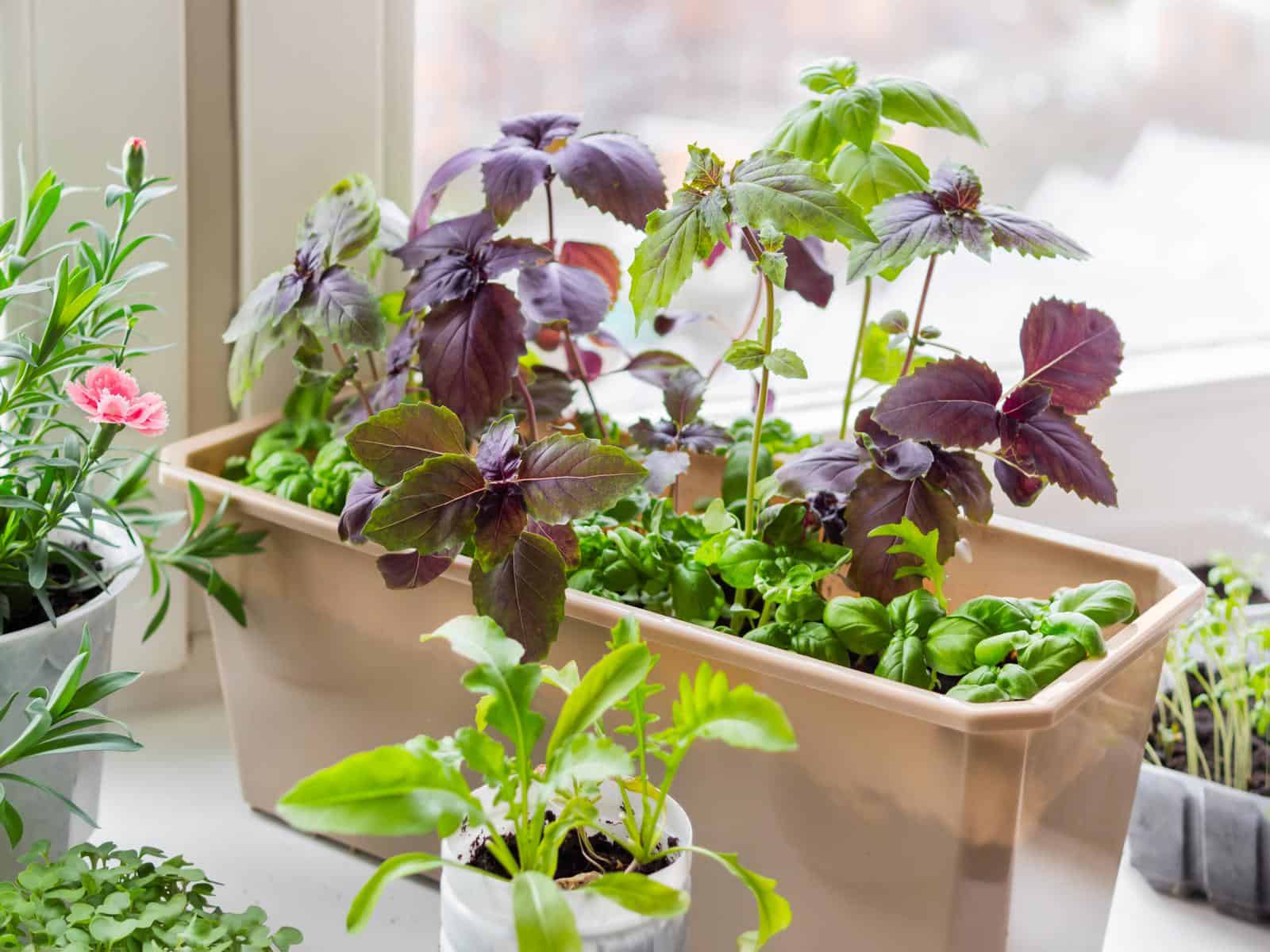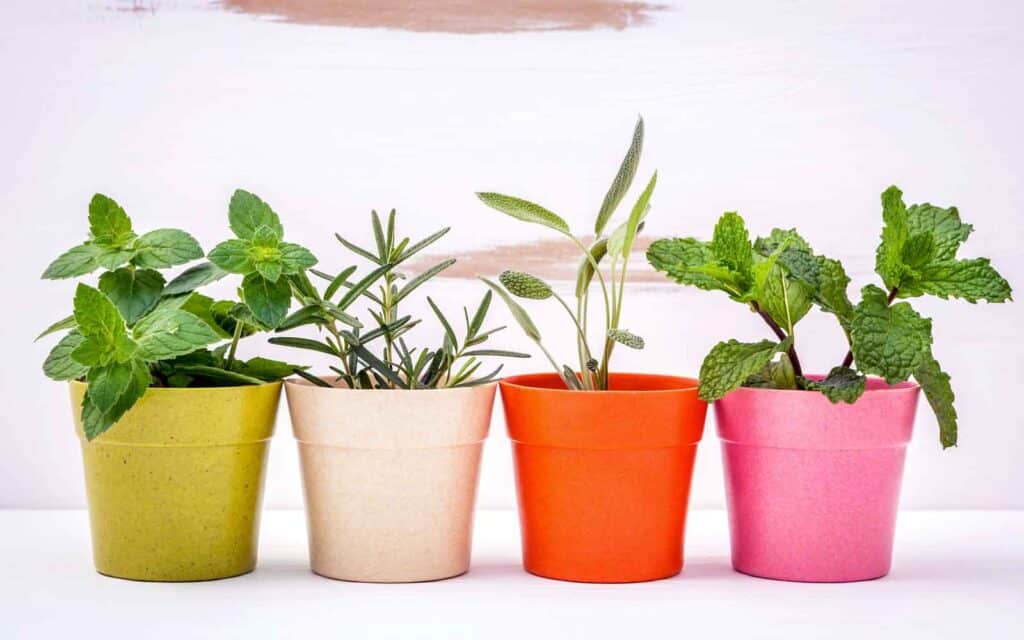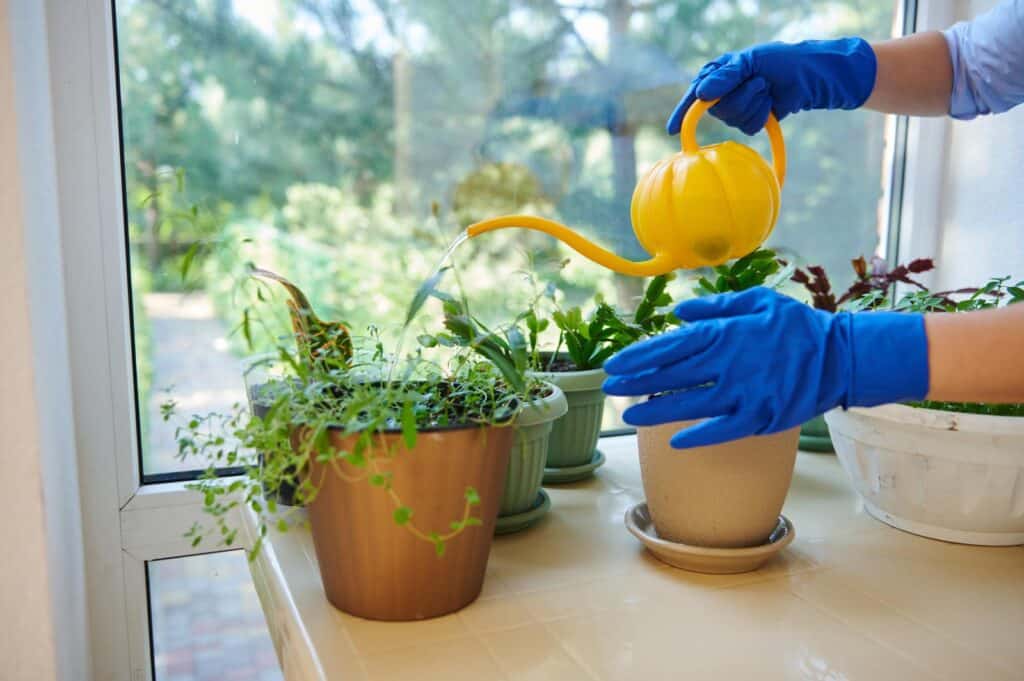Spring is in the air and what better way to welcome it than by starting your very own indoor herb garden? With a little bit of effort and know-how, you can master the art of growing fresh herbs in the comfort of your own home, adding a delicious touch of green to your meals.

Why you need an indoor herb garden
An indoor herb garden is convenient to have and easy to grow — perfect for experienced and beginner gardeners alike. Growing herbs is often cheaper than purchasing them at the grocery store and they have a better flavor, too, as they can be picked right when you need them. Even with a backyard vegetable garden, the ability to pinch off a few leaves from a plant in your kitchen is an unmatched convenience that can be the difference between using your herbs and just growing them.
Herbs best suited for an indoor garden
Simply put, the best herbs for an indoor herb garden are the ones you will use most often. Soft, leafy herbs like basil, cilantro, mint, chives, dill and parsley are great options and can sometimes grow more easily indoors than in an outdoor herb garden because you can more readily control their environment. Hard herbs like rosemary, thyme, oregano and sage are also good options, but they are perennials and will outgrow the small pots most people use for indoor gardening.
Selecting a location for your garden
The location of your indoor garden is one of the most important decisions. When choosing just the right spot consider these things: airflow, space, light and water access.
Proper airflow is crucial to successful gardening, as it aids in keeping your plants free from the dampness that can cause mold and mildew to grow. Airflow and space go together because if you give your plants enough space the air will more easily flow around them. Pick a space that has room to spread out your plants and allow the air to flow between them.
You also need a spot that has plenty of sunshine. Unobstructed south-facing windows are going to give you the most direct light, but any bright and sunny location will do.
Water access might feel like a given, as you can pick up a watering can and water anything anywhere. However, if you put your pots in a place that makes it more difficult to water them, it’s easier to forget to water them. A kitchen window sill is often a popular choice.

“Indoor herb gardens bring fresh life into any indoor space. Not only will you have your favorite fresh herbs on hand, but you’ll see life growing before your eyes. Why not line a few pots along the kitchen windowsill? I’m sure you’ll feel a little cheer every time you see them!”
— Jessica Haggard, Easy Homemade Life
Get your gardening supplies
The best place to source your gardening supplies is from your local gardening shop. Most of them carry both seeds and seedlings, the small starter plants, of herbs in varieties that will do well in your growing region. If you’ve never planted from seed before, an indoor herb garden is a great opportunity to try it out.
Next, choose your pots. Pick containers with a drainage hole that fit your space. Two-piece pots that come with a tray are good for reducing the mess when water drains out the bottom of the pot. If you are setting up your garden on the kitchen window sill, three or four-inch pots are a good choice. With the smaller size, you’ll want to pick out one pot per plant type. If you have a larger space, you can choose a larger pot and put multiple herbs in each pot. If you are grouping your plants together, check the plant tags or seed packets and put plants together that have similar sun and water requirements.
Regardless of starting from seed or seedling, you will need potting soil. Seedlings will require less soil than seeds, but both will do best in soil formulated for container gardening. You won’t need to add fertilizer right away, as the soil will already have fertilizer included, but you’ll need to add more in a few weeks so go ahead and get it now. Look for one labeled for vegetable and herb gardens or ask the pro at your garden shop.
Other things you may want to consider are gardening gloves, a small trowel and perhaps a potting mat to help contain the mess during the planting process.
Shopping list:
- Seeds or seedlings
- Pots with drainage holes and trays
- Potting soil
- Fertilizer for vegetable and herb gardens
- Gardening gloves
- Small trowel
- Potting mat
Planting your herbs
Now that you have a location and your supplies, it’s time to get to it.
When planting from seed, you’ll want to loosely fill your pot with potting soil, add water to ensure the soil is evenly moist, then top off the pot with more soil so that it comes up about half an inch from the top. Check the directions on your seed packets for the depth and plant three seeds in each pot. Add more water and allow it to drain before placing it in your chosen spot.
When planting from seedlings, add enough soil to the bottom of the pot so that when the plant is placed on top it comes about half an inch from the top. Carefully transfer the plant to the pot, then add more soil around the edges to fill the pot evenly. Water your seedlings and allow them to drain before placing them in your garden space.
Caring for your herbs
In order to grow big and strong herbs need ongoing care in the form of water, light and fertilizer. For the first week or so after planting, you’ll want to keep your herb pots moist to promote good germination and root growth. After that, they will need to be watered every three to four days, or twice a week. If you live in a hot or dry climate, you may need to water more often.
Placing your herbs by a bright window should provide them ample lighting, even indoors. For best results, your plants should be within one to two feet of the window.
Herbs in pots should be fertilized every two to four weeks. Fertilizer comes in many forms and you should follow the instructions on the packaging of the fertilizer you chose.

Harvesting and using your herbs
The best part of a successful indoor herb garden is putting them to use. Harvesting your herbs is a quick and easy way to dial up the flavor in your favorite recipes or add a twist to a tasty cocktail. Simply clip what you need and trust that your well-cared-for plant will produce more the next time you need it. As a rule of thumb, try not to use more than 25 percent of the plant so that it is strong enough to regenerate.
For soft herbs, meaning the ones with soft stems, like cilantro and basil, clip off what you need and chop up both the stem and leaves. Soft herbs are usually added at the end of cooking and used as a garnish.
For hard herbs, the ones with hard woody stems, like tarragon and rosemary, you only use the leaves. Clip off the stem, remove the leaves, then discard the stems. Hard herbs are typically added earlier in the cooking process and are also used as a garnish.
In conclusion, planting an indoor herb garden can be both rewarding and fulfilling. Not only does it allow you to have fresh herbs on hand for cooking, but it also brings the benefits of gardening indoors. Whether you have limited outdoor space or simply want to bring a touch of greenery to your home, an indoor herb garden is a great option. By following the tips outlined in this article, you can get started on your own indoor herb garden and enjoy the many benefits it provides. Happy planting!
Renee N Gardner is the creative mastermind behind Renee Nicole’s Kitchen, a recipe blog based on seasonal ingredients, dedicated to helping home cooks build their kitchen confidence to become home chefs. When Renee isn’t writing, developing recipes, or photographing food, you’ll find her in the garden, traveling, or enjoying the outdoors with her husband, son, and two dogs.